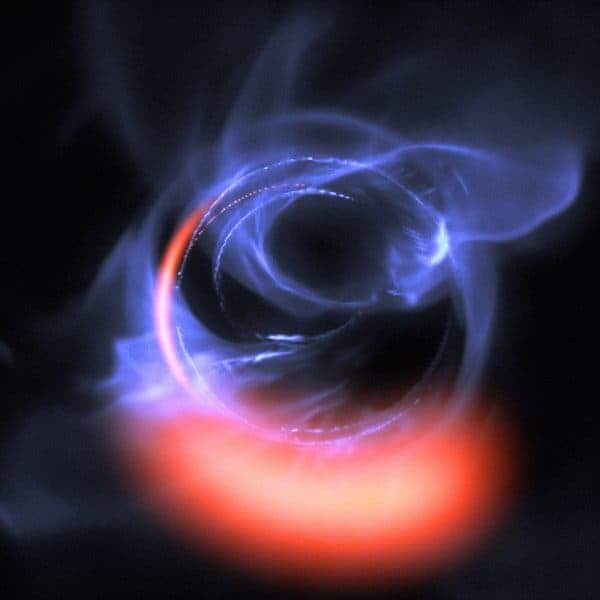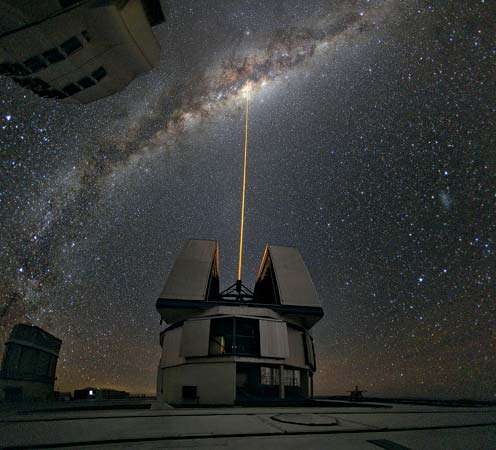
Illustration of hot clumps of gas that orbit the black hole at the center of the Milky Way. Credit: ESO/Gravity Consortium/L. Calçada.
Scientists have known for a long time that at the very heart of the Milky Way lies a supermassive black hole, about four million times more massive than the Sun. As its name suggests, we can’t image a black hole directly, but cutting-edge telescopes can tease out the infrared light emitted by interstellar gas as it swirls into the black hole. Now, an international team of researchers led by the Max Planck Institute for Extraterrestrial Physics reported evidence of knots of gas that appear to orbit the galactic center. This remarkable observation is the closest look yet at our galactic supermassive black hole and, at the same time, offers new opportunities to test the laws of physics.
The point of no return
To image things in the vicinity of Sagittarius A*, the Milky Way’s supermassive black hole, researchers looked to the GRAVITY project. Using a special technique called interferometry, four eight-meter-wide telescopes at the European Southern Observatory’s Very Large Telescope in Chile were combined to produce images that only a hypothetical telescope as large as entire countries could produce. By the same technique, in the future, a ‘planet-sized’ instrument called the Event Horizon Telescope hopes to produce an actual image of a black hole.
The new observations measured the brightness and position of infrared flares in the vicinity of Sagittarius A*. These flares actually trace a tiny circle in the night’s sky, the researchers found, moving clockwise.

Yepun telescope, part of the European Southern Observatory’s (ESO’s) Very Large Telescope. Credit: ESO.
These kinds of outbursts had been detected before. However, this was the first time that astronomers precisely measured the flares’ positions and motions before they dissipated. Each flare moved at about 30% light speed in a 45-minute orbit around what we can only suppose is a black hole.
Earlier this year, the same team measured the relativistic distortion of light from a star, S2, during its closest approach to Sagittarius A*.
These hot spots might be produced by shock waves in magnetic fields, much as solar flares erupt from the sun. Due to the immense gravitational forces present in the vicinity of the black hole, space-time itself is twisted into something resembling a lens, which causes these hot spots, circling at 30% the speed of light, to flash beacons of light across the cosmos. And by further studying these flares, researchers hope to tease out the black hole’s spin or rotation.
All of this, of course, assuming Einstein’s general theory of relativity is correct, which implies that the orbits of objects around a black hole are determined solely by the black hole’s mass and spin. If not, then the theory might need some refinement to accommodate for any observed inconsistencies.
Researchers reported their findings in the journal Astronomy & Astrophysics.









